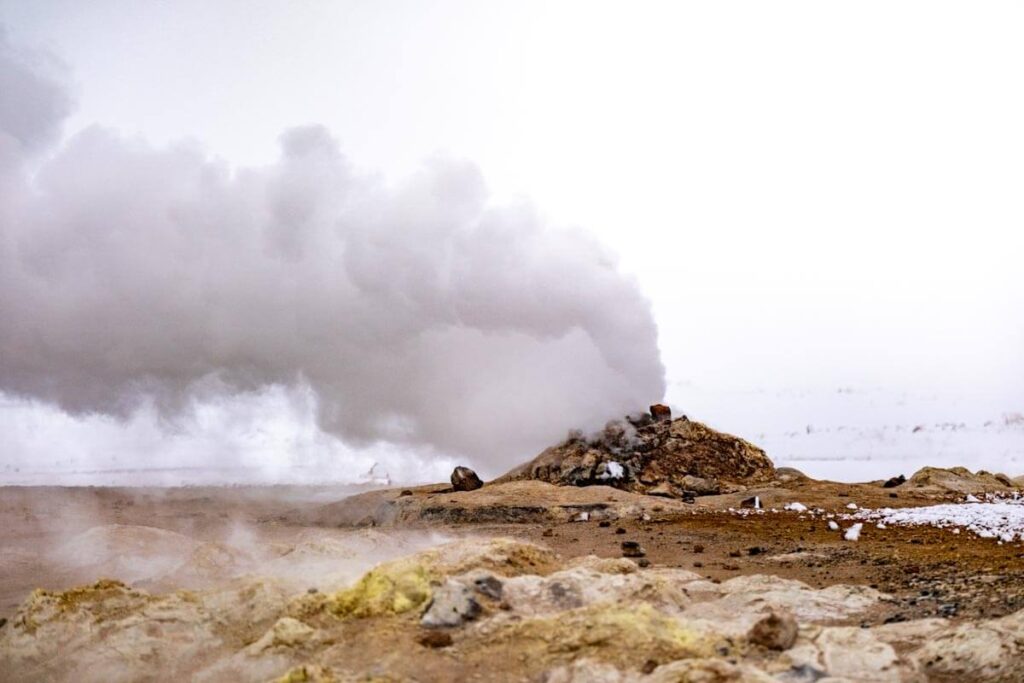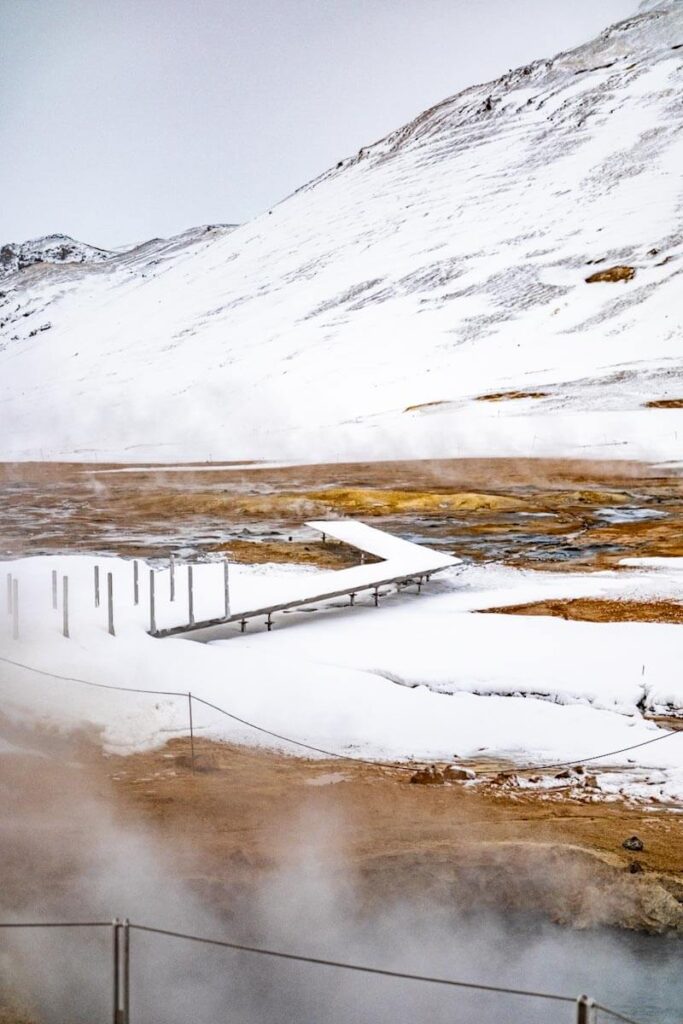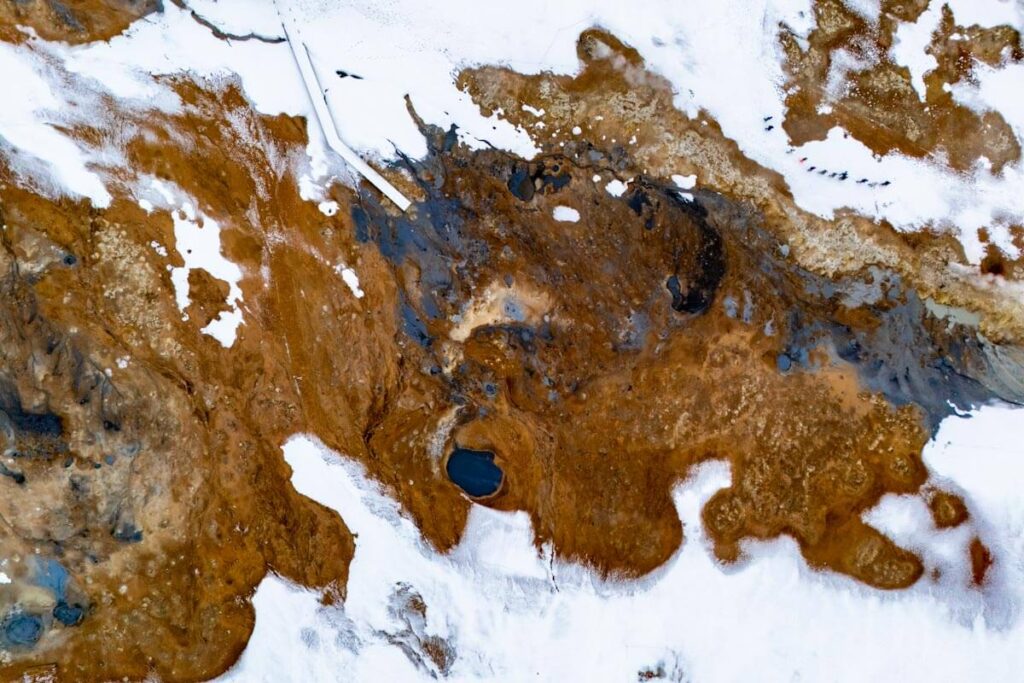Námafjall Hverir is located in the north of Iceland, near Lake Mývatn and is one of the country’s most impressive geothermal areas. I visit Hverir after driving a section of the Arctic Coast Way and continuing onto part of the famous Diamond Circle. I’d love to tell you more about this remarkable place.
Námafjall Hverir
Námafjall Hverir is named after the nearby mountain Námafjall (which means “mine mountain”). It is known for its unique landscape of boiling mud pools, bubbling geysers and steam vents rising from the ground. Spectacular to witness and also a powerful display of geothermal activity in this region.
The volcanic system of Krafla
Námafjall Hverir is closely connected to the Krafla volcano, one of Iceland’s most active volcanoes. Hverir lies in the heart of the Krafla volcanic system, known for its powerful eruptions and geothermal activity. The geysers and mud pools at Námafjall Hverir are the direct result of the immense heat rising from the continuous volcanic activity underground. The mud pots and steam vents are clear evidence of the Earth’s power in this location.

Krafla fires
The Krafla volcano has a turbulent history of eruptions. The most recent eruptions occurred between 1975 and 1984, a period known as the Krafla Fires. During this time, there were intense earthquakes and multiple eruptions. New lava fields were created and new geothermal sources appeared in the area. The region around the Krafla volcano, including the geothermal field of Námafjall Hverir, experienced increased activity due to the eruptions.
Consequences of the Krafla Fires
The Krafla Fires had both geological and ecological consequences. The region also became an important research area for volcanologists. The immense heat released during the eruptions was eventually harnessed for geothermal energy production. In 1977 the Krafla-geothermal power station was put into operation, helping the region generate clean and sustainable energy. This power station, which is still active today, uses the remaining geothermal energy produced by the Krafla system.


Visiting Námafjall Hverir
I visit Námafjall Hverir in winter, when everything is covered by a thick layer of snow. The walking paths aren’t visible, so I have to be careful where I step. The boardwalks are slippery or buried under snow and are therefore closed. Still, a winter visit has something truly special. The area might even look more mysterious with snow than without. The colors are still very visible, as the snow melts immediately due to the heat. Grey, bubbling mud pools and colorful mineral deposits create beautiful contrasts with the bright white snow. A fantastic spot for photography!
Parking at Námafjall Hverir
There is a large parking area at Námafjall Hverir. At the entrance, cameras register incoming cars. On the parking lot itself there is a ticket machine. Here you can enter your license plate number, after which you’ll see a photo of your plate taken by the camera. You pay 1200 ISK (by card or credit card) and this allows you to park for 24 hours. If you don’t pay, it’s very likely you’ll receive a bill from your car rental company later. Keep in mind that this amount will be increased with administrative fees. Paying on the spot is definitely the better option.
How much time do you need to visit Námafjall Hverir?
If you don’t plan on hiking in the surroundings of Námafjall Hverir, but are mainly interested in the geothermal activity, I’d suggest setting aside about half an hour to an hour. It depends a bit on how many photos you want to take! The wind direction also plays a role. If the wind is blowing towards the parking area and walking paths, you might be done quite quickly because the smell can be intense; it really reeks of rotten eggs.
